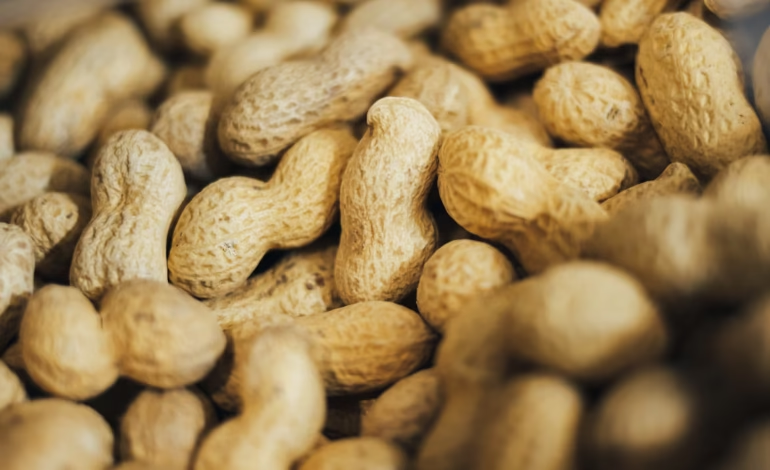Peanut Allergies Unpacked: Understanding Risks, Symptoms, and the Latest Advances in Treatment
When Peanuts Became a Threat: My Personal Story Growing up, peanuts were just an ordinary part of life. I remember enjoying peanut butter sandwiches and handfuls of roasted peanuts without

When Peanuts Became a Threat: My Personal Story
Growing up, peanuts were just an ordinary part of life. I remember enjoying peanut butter sandwiches and handfuls of roasted peanuts without a second thought. It was a staple snack that brought comfort and joy. But somewhere along the way, things changed. Suddenly, what had been harmless became a source of fear—not just for me, but for millions worldwide.
For many, peanut allergies develop early in childhood, but for others, like myself, the onset can be later and unexpected. It’s a sharp reminder that allergies can be unpredictable, and awareness is key.
Who Is At Risk of Peanut Allergies?
Peanut allergies affect about 2-3% of children globally, and the numbers have been climbing over recent decades. But who exactly is at risk?
Genetic Factors
If you have a family history of allergies—especially food allergies, asthma, or eczema—you are more likely to develop a peanut allergy. Genetics lay the groundwork for how your immune system reacts.
Environmental Influences
Where and how you grow up matters. Early exposure to allergens, diet diversity, and even the environment’s microbial makeup influence allergy development. For example, children raised in urban settings or overly sanitized environments may have higher allergy risks.
Existing Allergic Conditions
Children with eczema or asthma are particularly vulnerable. Their immune systems already show hypersensitivity, making them more prone to food allergies.
Age and Introduction Timing
Research now shows that introducing peanuts early in infancy (around 4-11 months) can reduce allergy risk. Avoiding peanuts during this window—once thought protective—may actually increase risk.
Socioeconomic and Ethnic Factors
Studies reveal that peanut allergy prevalence varies by ethnicity and socioeconomic status. For example, some ethnic groups show different rates of peanut allergy, likely due to genetic, dietary, and environmental differences. Access to healthcare and awareness also play roles.
How to Avoid Peanut Allergies in Your Diet

For those with peanut allergies, avoidance is critical—but tricky. Peanuts sneak into many foods and products.
Common Foods and Products That May Contain Peanuts or Peanut Residue:
- Baked goods: Cookies, cakes, brownies often use peanut flour or peanut butter
- Candies and chocolates: Peanut butter cups, brittle, and some chocolates
- Sauces and dressings: Satay sauce, some Asian sauces, salad dressings
- Snack foods: Trail mixes, granola bars, and flavored chips
- Breakfast cereals: Certain granolas or clusters
- Processed foods: Sometimes as an ingredient or due to cross-contamination
Tips for Avoidance:
- Read labels carefully: In many countries, peanut allergens must be declared on packaged foods, but always check for “may contain peanuts” warnings.
- Cook at home: Preparing meals yourself reduces risks of hidden ingredients or cross-contamination.
- Ask questions when eating out: Inform servers and chefs about your allergy and ask how foods are prepared.
- Use dedicated kitchen tools: Avoid cross-contact by using separate utensils and appliances for allergen-free cooking.
- Carry allergy cards: Especially when traveling or eating in unfamiliar places, cards explaining your allergy can help communicate your needs clearly.
What To Do If You Have a Severe Reaction
If you or someone near you has a peanut allergy and experiences a reaction, quick action is vital.
Recognize the Signs of a Severe Reaction (Anaphylaxis):
- Difficulty breathing, wheezing, or tightness in the throat
- Swelling of the tongue or throat
- Rapid or weak pulse
- Dizziness, fainting, or loss of consciousness
- Hives or widespread rash
- Nausea, vomiting, or abdominal cramps
Immediate Steps to Take:
- Use an epinephrine auto-injector (EpiPen) immediately—this is the first and most crucial treatment for anaphylaxis.
- Call emergency services right away, even if symptoms improve after epinephrine.
- Lay the person flat and elevate legs, unless breathing is difficult—in which case, they should sit up slightly to ease breathing.
- If no epinephrine is available and symptoms worsen, call for emergency help immediately.
- After epinephrine administration, monitor closely—a second reaction can occur, and further medical care is essential.
Living with Peanut Allergies: Awareness and Empowerment
Peanut allergies can feel overwhelming, but knowledge is power. Educating yourself, family, friends, and schools ensures a safer environment. With emerging treatments like oral immunotherapy and epicutaneous patches, hope is growing for improved tolerance and quality of life.
Read About: Lactose Intolerance Isn’t Just a Trend: Why Dairy Might Be Disagreeing With You
Some Thoughts: Navigating Peanut Allergies with Confidence
From my personal experience to the latest scientific breakthroughs, peanut allergies are complex but manageable. Early awareness, prevention strategies, and preparedness for emergencies form the pillars of safety.
While peanuts may have turned from a childhood treat into a serious health risk for many, evolving research and treatments offer hope—and empower us to live with confidence, not fear.
By Gloria Lancer for Ravoke.com








